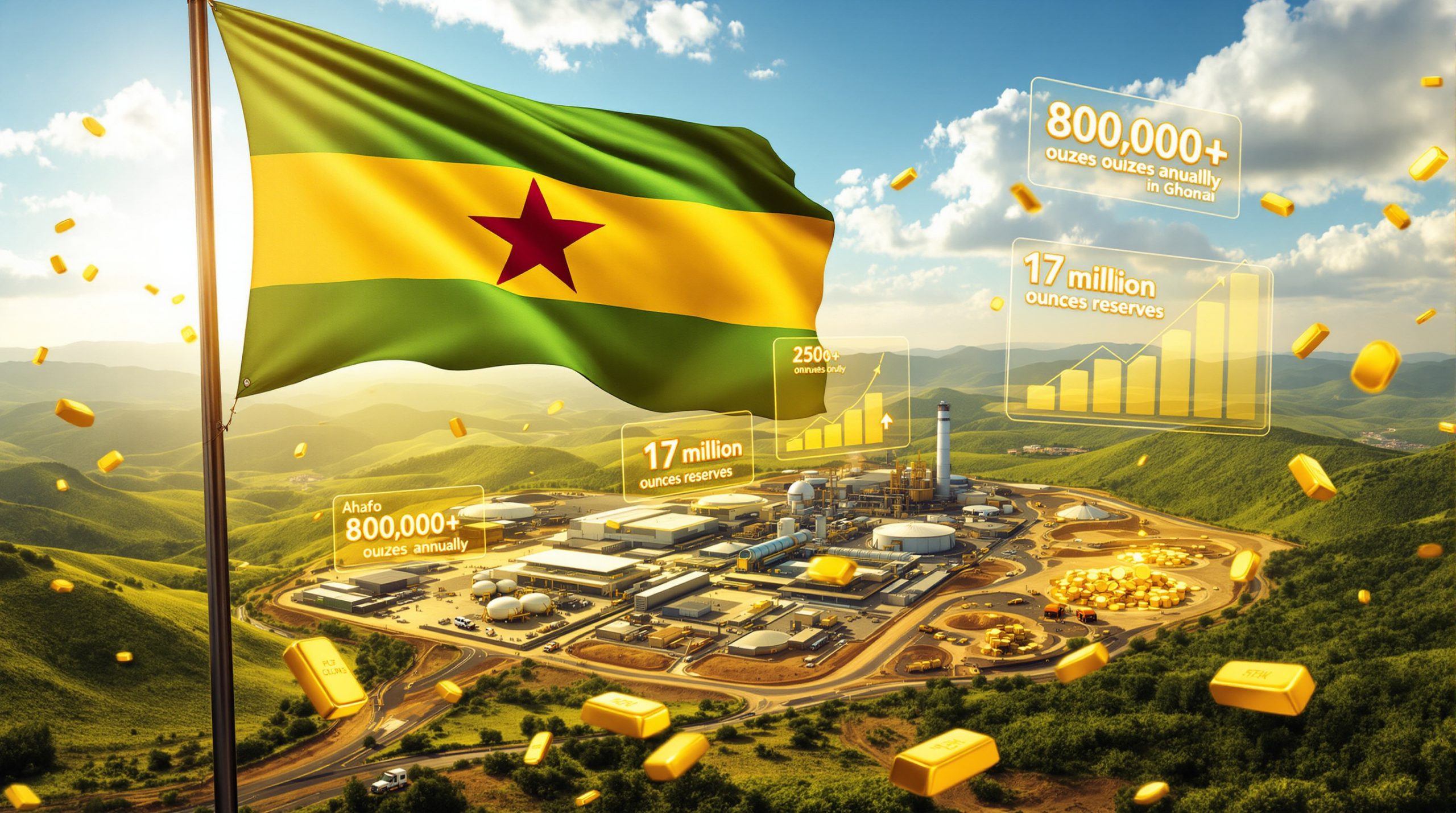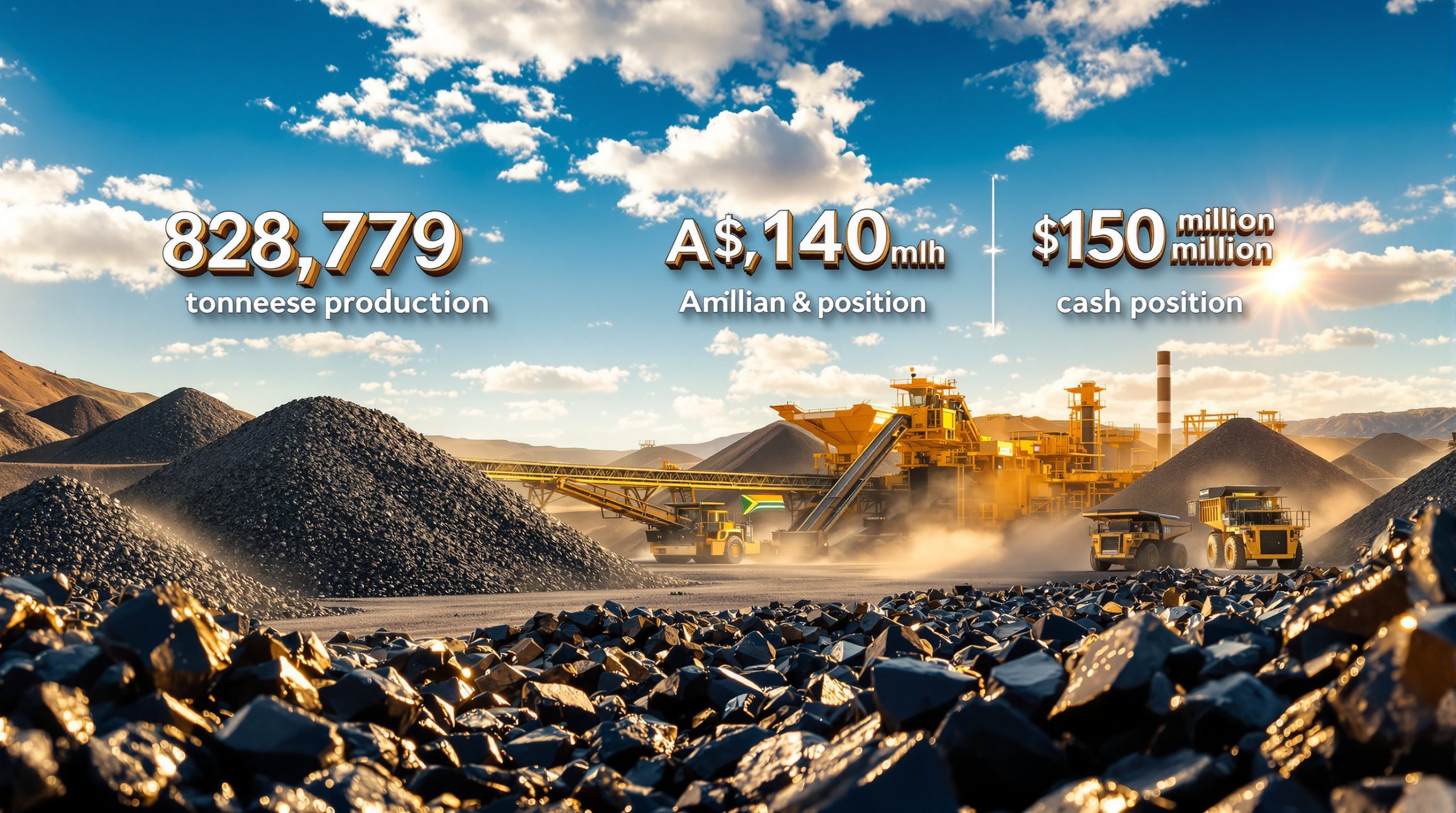Understanding the China-US Rare Earth Diplomatic Breakthrough
The diplomatic landscape surrounding critical minerals took a dramatic turn when Chinese and American leaders reached a temporary agreement on China and US rare earth truce export restrictions. This development emerged from mounting economic pressures that had been building throughout 2025, creating significant disruptions across multiple industrial sectors.
The genesis of this agreement can be traced to China's strategic decision to implement export controls on seven critical rare earth elements earlier in the year. These restrictions were positioned as a response to escalating trade tensions and expanding tariff structures imposed by the United States. Furthermore, the immediate impact was felt across American manufacturing sectors, particularly in electric vehicle production, advanced electronics, and defense applications.
Timeline of Critical Developments
The path to this diplomatic breakthrough unfolded through several key phases:
- Early 2025: Initial trade tensions escalate with expanded US tariff implementations
- Spring 2025: China announces export restrictions on seven rare earth elements
- Mid-2025: Manufacturing disruptions intensify across Western supply chains
- Summer 2025: Preliminary negotiations commence through diplomatic channels
- October 2025: One-year suspension of export restrictions announced
The complexity of this situation reflects deeper structural issues within global rare earth supply chains. Moreover, China currently controls approximately 80% of global rare earth processing capacity, despite holding only about 37% of known reserves. This concentration of processing capability has created vulnerabilities that extend far beyond simple mining operations.
Supply Chain Vulnerabilities Exposed
The recent crisis illuminated critical weaknesses in Western industrial supply chains. Manufacturing companies across sectors experienced production slowdowns and increased input costs as rare earth availability became uncertain. Consequently, the electronics industry, in particular, faced challenges with materials essential for permanent magnets used in everything from wind turbines to smartphone speakers.
Recent rare earth breakthroughs have highlighted the importance of these materials in advanced manufacturing. Additionally, concerns about critical minerals security have intensified across Western economies.
Impact on Global Rare Earth Supply Networks
The temporary suspension of export restrictions provides immediate operational relief for manufacturers who had been grappling with material shortages and escalating costs. However, this reprieve comes with significant strategic implications that extend beyond short-term supply stabilization.
Manufacturing sectors dependent on rare earth inputs can now resume normal production planning without the immediate uncertainty of material availability. This stabilization is particularly crucial for industries with long production cycles and complex supply chain requirements, such as automotive and aerospace manufacturing.
Short-Term Manufacturing Relief
The immediate beneficiaries of this agreement include:
- Electric vehicle manufacturers requiring neodymium for motor magnets
- Wind turbine producers dependent on dysprosium for generator efficiency
- Electronics companies utilizing rare earths in component manufacturing
- Defense contractors requiring specialized materials for advanced systems
Production facilities that had been operating under constrained supply conditions can now rebuild inventory levels and establish more predictable production schedules. In addition, this operational breathing room is essential for maintaining competitiveness in global markets where supply disruptions can quickly erode market position.
Strategic Supply Chain Considerations
Despite the temporary relief, fundamental supply chain concentration risks remain unaddressed. The agreement essentially provides a strategic pause rather than a permanent solution to Western dependencies on Chinese rare earth processing capabilities.
The one-year timeframe creates both opportunities and pressures for alternative supply development. Western nations and companies now have a defined window to accelerate diversification initiatives without the immediate pressure of supply shortages driving emergency procurement decisions.
Ongoing developments in US-China trade strategies continue to shape the broader geopolitical landscape. Furthermore, European supply chains are being restructured to reduce dependency on single sources.
Market Response and Stock Price Volatility
Financial markets reacted swiftly to the export restriction suspension, with rare earth sector stocks experiencing significant volatility. The market response reflects the complex interplay between supply security premiums and fundamental commodity pricing dynamics.
According to Reuters analysis, rare earth mining companies experienced notable share price declines following the announcement. Additionally, Bloomberg reports indicate that China's pause on export restrictions has created significant market uncertainty.
Price Correction Mechanisms
The announcement triggered notable declines across Western rare earth companies as markets reassessed near-term supply constraints. This correction occurred because:
- Scarcity premiums built into stock valuations were suddenly removed
- Commodity price expectations shifted from shortage-driven increases to supply normalization
- Investment urgency for alternative supply sources temporarily diminished
- Risk premiums associated with supply disruption scenarios decreased
Affected Market Segments
Companies across the rare earth value chain experienced varying degrees of price volatility:
Mining and Extraction Companies:
- Immediate pressure on commodity price forecasts
- Reduced urgency for project development acceleration
- Potential delays in securing development financing
Processing and Refining Operations:
- Competitive pressure from resumed Chinese exports
- Margin compression concerns in near-term operations
- Strategic positioning questions for capacity expansion
Downstream Applications:
- Cost structure improvements from stable input pricing
- Reduced supply chain risk premiums in valuations
- Enhanced production planning capabilities
Strategic Implications for Australian Rare Earth Companies
Australian rare earth companies find themselves navigating a complex strategic landscape following the diplomatic breakthrough. While short-term market pressures present challenges, the fundamental value proposition of non-Chinese supply sources remains strategically relevant.
The Australian rare earth sector encompasses both established producers and development-stage companies, each facing distinct implications from the current market dynamics. Established operations must contend with immediate competitive pressures, while development projects may experience shifts in investment timelines and funding availability.
Near-Term Operational Challenges
Price Competition Dynamics:
Resumed Chinese exports create immediate competitive pressure on rare earth pricing. Australian producers must evaluate their cost structures against normalized global supply conditions rather than shortage-driven premium pricing.
Investment Climate Shifts:
The suspension of export restrictions may temporarily cool investor enthusiasm for alternative supply development projects. This could impact:
- Capital raising activities for expansion projects
- Government support program prioritization
- Strategic partnership development timelines
- Technology development funding availability
Strategic Positioning Advantages
Despite near-term challenges, Australian rare earth companies maintain several strategic advantages:
Geological Resources:
Australia possesses significant rare earth deposits, with the country holding approximately 2.8% of global reserves. Key deposits include:
- Mount Weld (Western Australia) – Currently operational
- Nolans Project (Northern Territory) – Under development
- Dubbo Project (New South Wales) – Advanced development stage
Processing Capabilities:
Australian companies have been developing downstream processing capabilities to reduce dependence on Chinese refining operations. This vertical integration strategy remains relevant regardless of temporary export restrictions.
Strategic Partnerships:
Government-backed initiatives supporting critical minerals development continue to provide structural advantages for Australian companies, including:
- Critical Minerals Strategy funding programs
- International partnership agreements
- Research and development support initiatives
The importance of Australian mineral reserves in global supply chain security continues to grow despite temporary market corrections.
Geopolitical Context and Sustainability Analysis
The temporary nature of the China and US rare earth truce reflects deeper strategic considerations that extend beyond immediate trade concerns. Both nations are engaged in long-term competition for technological advantage, with rare earth supply security representing just one component of broader strategic rivalry.
Underlying Strategic Competition
The rare earth sector remains central to technological competition between major powers. Key areas of strategic focus include:
Military Applications:
- Advanced guidance systems requiring precise rare earth components
- Electronic warfare capabilities dependent on specialized materials
- Next-generation weapons systems utilizing rare earth technologies
Economic Security:
- Clean energy infrastructure development requiring significant rare earth inputs
- Electric vehicle industry growth driving demand expansion
- Advanced manufacturing competitiveness linked to material access
Technology Transfer Dynamics
Parallel discussions around semiconductor technology exports and advanced manufacturing capabilities indicate the rare earth agreement forms part of broader technological competition management rather than sector-specific resolution.
The dual-use nature of many rare earth applications means that supply access intersects with national security considerations. Consequently, this makes purely commercial agreements inherently temporary and subject to strategic reassessment.
Long-Term Sustainability Questions
Several factors suggest the current truce may face future challenges:
- Strategic competition intensification in emerging technologies
- Supply chain resilience priorities driving diversification efforts
- Economic nationalism trends affecting trade policy decisions
- Climate transition requirements increasing rare earth demand significantly
Investment Strategy Framework for Rare Earth Stocks
The current market correction creates both risks and opportunities for investors focused on rare earth sector exposure. Successful navigation requires understanding the distinction between sentiment-driven price movements and fundamental value drivers.
Risk Assessment Methodology
Investors evaluating rare earth investments during the truce period should consider multiple risk factors:
Timing Considerations:
- Project development timelines relative to truce duration
- Funding requirements and cash burn rates
- Operational readiness for market re-entry when restrictions resume
Strategic Positioning:
- Government partnership arrangements and support levels
- Technology differentiation and competitive advantages
- Downstream integration capabilities and market access
Financial Resilience:
- Cash position adequacy for extended development periods
- Access to additional funding sources if needed
- Operational flexibility to adjust to market conditions
Sector Rotation Opportunities
The current environment may favor different investment approaches:
Established Producers:
- May face immediate margin pressure from normalized pricing
- Possess operational stability and cash generation capabilities
- Could benefit from eventual supply constraint resumption
Development-Stage Companies:
- May experience funding challenges in near-term
- Could benefit from extended development timelines reducing execution pressure
- Represent higher-risk, higher-reward positioning for long-term supply security themes
Portfolio Construction Considerations
Strategic Investment Framework: Rare earth investments should be viewed as long-term strategic positions rather than short-term tactical trades. The current truce provides an opportunity to evaluate companies based on fundamental capabilities rather than supply emergency premiums.
Diversification Approaches:
- Geographic diversification across different rare earth producing regions
- Value chain diversification including mining, processing, and application companies
- Strategic diversification balancing established operations with development projects
Technical Analysis of Rare Earth Market Dynamics
Understanding the technical aspects of rare earth markets requires examining both geological factors and processing complexities that create inherent supply constraints regardless of political agreements.
Geological Distribution and Quality Factors
Rare earth deposits vary significantly in both concentration and composition, affecting economic viability and strategic value:
Heavy vs. Light Rare Earth Elements:
- Light REE (Lanthanum to Gadolinium): More abundant, easier to process
- Heavy REE (Terbium to Lutetium): Scarcer, higher-value applications
- Critical Elements: Dysprosium, terbium, and europium command premium pricing
Deposit Characteristics:
| Deposit Type | Processing Complexity | Strategic Importance | Example Locations |
|---|---|---|---|
| Carbonatite | Moderate | High (balanced REE profile) | Mount Weld, Australia |
| Ion-absorption | High | Critical (heavy REE rich) | Southern China |
| Monazite | High | Moderate (light REE focused) | Various beach sands |
Processing Technology Barriers
The rare earth industry faces significant technical challenges that extend beyond mining operations:
Separation Technology:
- Requires sophisticated chemical processing facilities
- Generates significant environmental waste streams
- Demands specialised technical expertise and years of operational optimisation
Capital Requirements:
- Processing facilities require $500 million to $2 billion in initial capital investment
- Operational optimisation typically takes 3-5 years after commissioning
- Environmental compliance adds 20-30% to total project costs
Regulatory Environment and Government Policy Implications
Government policies across major economies continue to prioritise critical minerals supply security, regardless of temporary trade agreements. This policy consistency provides underlying support for long-term sector development.
Western Government Initiatives
United States:
- Critical Materials Security Program providing development funding
- Defense Production Act authorities for strategic material procurement
- Research and development tax incentives for alternative processing technologies
European Union:
- Critical Raw Materials Act establishing supply security targets
- Green Deal funding for sustainable extraction and processing
- Strategic partnership agreements with resource-rich nations
Australia:
- Critical Minerals Strategy allocating $2 billion for sector development
- Export Finance Australia support for international partnerships
- Research collaboration agreements with allied nations
Environmental and Social Governance Factors
Rare earth development increasingly faces ESG scrutiny, creating additional complexity for project evaluation:
Environmental Considerations:
- Radioactive waste management requirements
- Water usage and contamination prevention
- Greenhouse gas emissions from energy-intensive processing
Social Licence Requirements:
- Community engagement and benefit-sharing arrangements
- Indigenous rights recognition and consultation processes
- Long-term environmental monitoring and remediation commitments
Frequently Asked Questions About the China-US Rare Earth Truce
What specific rare earth elements are covered by the export restriction suspension?
The suspension applies to seven critical rare earth elements that were subject to Chinese export controls. These materials are essential inputs for manufacturing permanent magnets, catalysts, and advanced electronics components used across multiple industrial applications.
How will this agreement affect global rare earth prices?
The suspension is likely to moderate price increases in the short term by removing immediate supply constraint premiums. However, long-term pricing will depend on demand growth from clean energy applications, electric vehicle adoption, and the development of alternative supply sources outside China.
Should investors avoid rare earth stocks during the truce period?
The truce creates both challenges and opportunities. While short-term price corrections may impact stock performance, the fundamental long-term drivers for supply chain diversification remain intact. Investors should focus on companies with strong operational capabilities and strategic positioning rather than avoiding the sector entirely.
What happens when the one-year truce expires?
The outcome will depend on broader geopolitical relations, progress in developing alternative supply sources, and the strategic priorities of both nations. Historical precedent suggests that trade agreements in strategic sectors are often extended or renegotiated rather than allowed to expire abruptly.
How does this affect Australian rare earth company valuations?
Australian companies may experience short-term valuation pressure as supply urgency premiums diminish. However, companies with advanced development projects and government support maintain strategic value for long-term supply security objectives.
What role do government policies play during this truce period?
Government support for critical minerals development continues regardless of temporary trade agreements. Policy makers recognise that supply chain resilience requires sustained investment over multiple years, making current support programs likely to continue despite short-term supply relief.
Strategic Outlook for Critical Materials Investing
The China and US rare earth truce represents a tactical pause in strategic competition rather than a fundamental resolution of supply chain vulnerabilities. While short-term market corrections create near-term challenges for investors, the underlying drivers for supply chain diversification remain structurally intact.
The current environment provides an opportunity to evaluate rare earth investments based on fundamental capabilities rather than emergency supply premiums. Companies with strong operational track records, government partnerships, and technical differentiation are better positioned to navigate the current volatility and capture long-term value creation opportunities.
Market participants should recognise that:
- The truce provides breathing room rather than eliminating long-term supply security concerns
- Western government policies supporting critical minerals development continue regardless of temporary trade agreements
- Technical barriers to rare earth processing create inherent advantages for established operations
- Clean energy transition requirements ensure continued demand growth for rare earth applications
The temporary nature of the current agreement underscores the importance of maintaining strategic perspective when evaluating investment opportunities in the critical materials sector. While market sentiment may fluctuate with geopolitical developments, the fundamental importance of secure rare earth supply chains to advanced manufacturing and clean energy infrastructure ensures continued long-term relevance for well-positioned companies in this strategic sector.
Furthermore, the China and US rare earth truce demonstrates how quickly geopolitical dynamics can shift, reinforcing the need for diversified supply chains and strategic preparedness. Investors and policy makers alike must balance short-term market opportunities with long-term security considerations.
This analysis is for informational purposes only and should not be considered personalised investment advice. Market conditions and geopolitical situations can change rapidly, potentially affecting the outlook for rare earth investments. Readers should conduct their own research and consider their individual risk tolerance before making investment decisions.
Considering Investing in Critical Minerals and Rare Earth Stocks?
Discovery Alert's proprietary Discovery IQ model delivers real-time alerts on significant mineral discoveries across the ASX, instantly empowering subscribers to identify actionable opportunities ahead of the broader market. Understand why major mineral discoveries can lead to significant market returns by exploring Discovery Alert's dedicated discoveries page, showcasing historic examples of exceptional outcomes. Begin your 30-day free trial today to position yourself ahead of the market.




